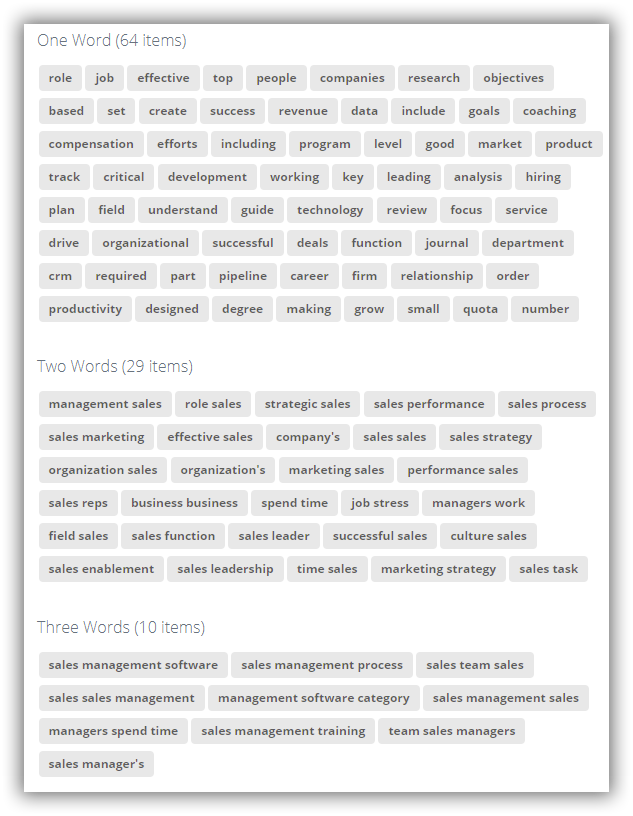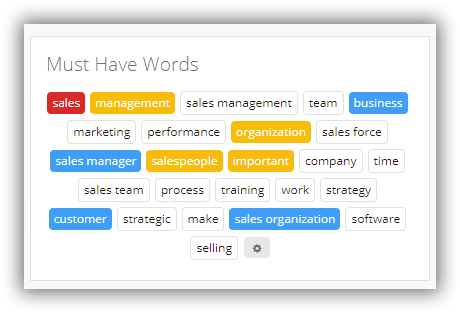This article is inspired by the post on moz, [Case Study] How We Ranked #1 for a High-Volume Keyword in Under 3 Months. The original post suggests a very step-by-step and detailed process for researching, writing and even promoting an article.
Article Insights can shortcut the amount of time you need to research and write an article for blog.
Follow this tutorial to see exactly how Article Insights can make it faster to write a great blog post for your audience.
Contents
Extreme Research
When it comes to great content, you should aim to create something substantially better than anything that is currently ranking in the SERPs. Of course this takes more work but as they say “content is king”.
Before you can write the best content, you need to know what Google is currently ranking and break it down from there.
You’re action plan is:
- Find what the most important article keywords for your article is. That means searching for the words that are most important for your article. Eg, an article about “sales management” has to talk about “sales managers”.
- Create an article outline based on that research.
Important terms
Article Insights succinctly lists the 25 most important words surrounding your article topic.
For “sales management” we have:
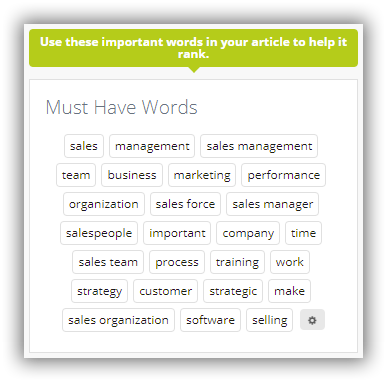
Obviously the most important words will be sales & sales management. Interestingly enough so is “sales manager”.
If we Google the term and check the top results, we can see that indeed sales manager is an important consideration.
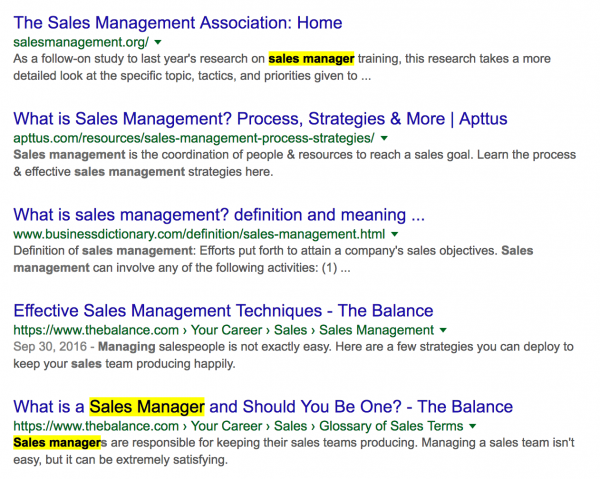
With just a glance you now know all the most important words for your article without having to manually shift through the Google results and try to determine what important words you might be missing.
The “must have word” listing shows only the top 25 most important words, however Article Insights has an expanded list of 250 words!
If you are not a niche expert, now you can be.
Suggested Outline
Before you write, you should create an article outline.
But how about if you don’t know where to start?
Once again, Article Insights can give you an idea.
The following are suggested article topics, found by grouping words that frequently occur in an article together.

For each topic, you can see the assigned words on the right.
For example, Topic 1, It would be talking about setting goals and objectives for the [sales] force.
Topic 2, Supporting sales teams with training, quotas etc.
Topic 4, How a team manager is important for the sales people.
You can click on the “Research” button for each topic to find out in detail how each topic is described.
Importantly, topics show you how key article terms can be grouped and organized.
For example, did you know salmon & tuna are good sources of fish oil in supplements?
Don’t forget about onpage
Keeping track of the onpage performance of your article can be done automatically as you write.
As you write, the tool will keep track of:
- Number of words written
- Total number of article terms present
- The readability of the article
- If anything you wrote currently already exists in the top ranked pages
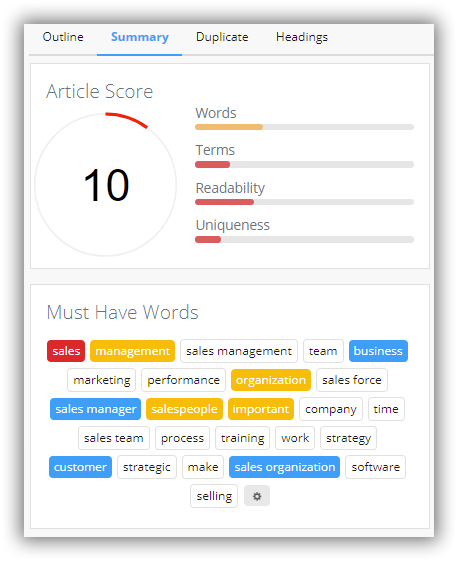
The important thing is to avoid optimizing for just “one” main keyword as many onpage seo tools just do.
Google is capable of ranking one article for multiple keywords. Therefore covering as many important article terms as you can is the most important part of writing a bad-ass article.
Ask questions
Google likes to present highlighted sections of a website to answer a question, if your site is chosen it will appear in the top slot!
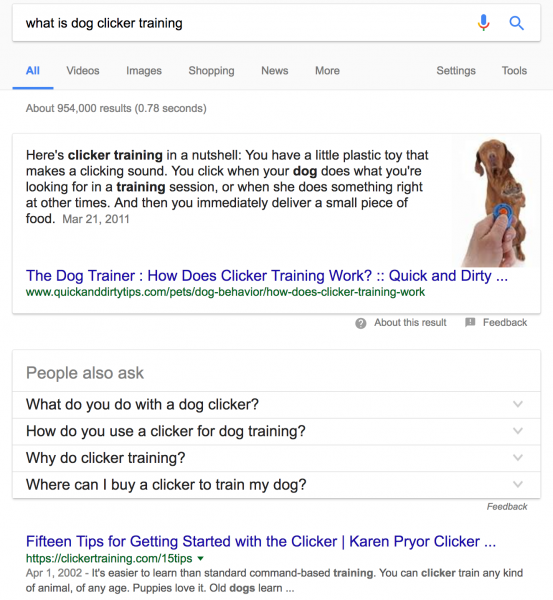
Watch out for over optimization
We know that Google runs statistical analysis on the words in our article. Depending on how many times a certain word appears it tells Google what your document is about.
Missing important terms means Google won’t rank your page as highly, while on the other hand over stuffing articles with the same keyword can be as detrimental.
Using Article Insights, we track the number of times a keyword is used. Don’t worry about over using terms anymore.
Anything in BLUE is ok, RED means that word appears too many times in the article and YELLOW is a warning that the word maybe overused.
Is your content unique?
Nothing hurts your article more than by having content detected as duplicate. Although this should be a very rare occurrence that is easy to avoid if you are writing your own articles.
Just to be safe, while you are writing Article Insights compares your content to is own list of content it found from top ranking sites.
If there is duplicate content it will be highlighted for you.

Just re-write the affected sentences to make it 100% unique.

